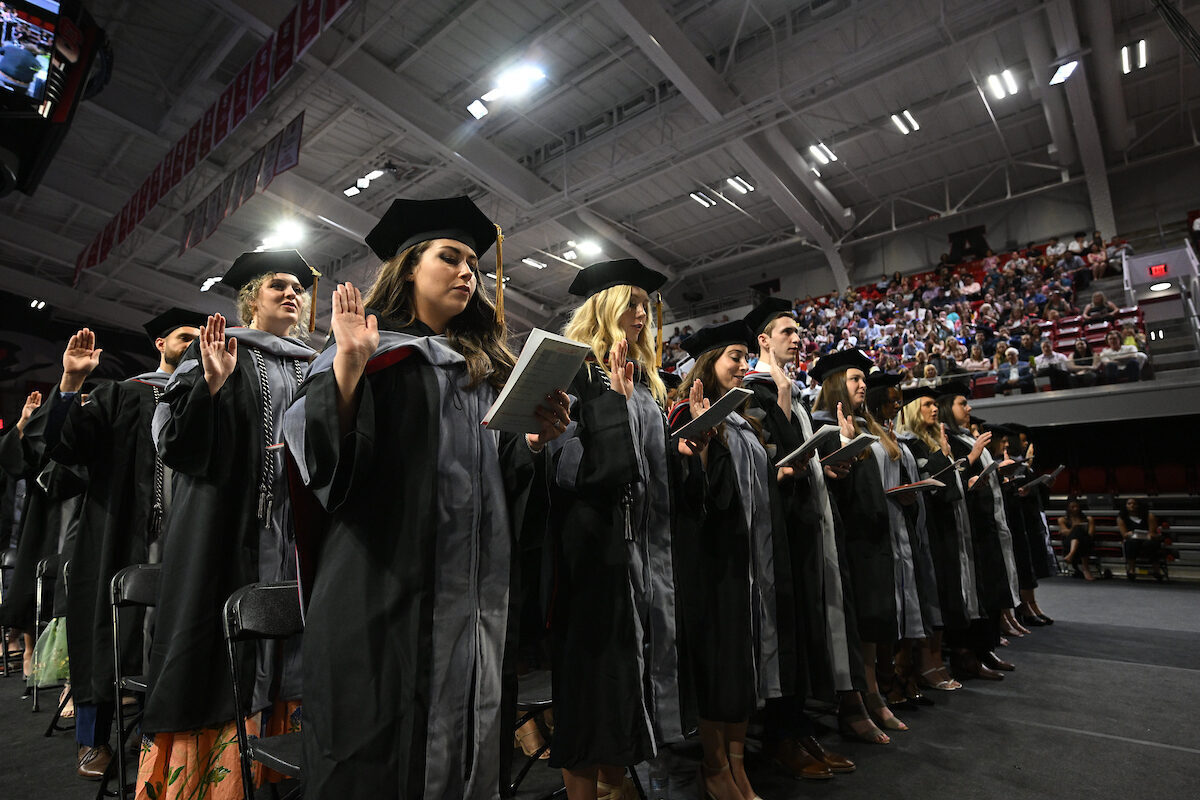Veterinarians Dealing with Suspected Animal Abuse Could be First Responders to Family Violence
This past spring Toby, a friendly one to two-year-old Lhasa Apso, became a special patient at the North Carolina State University Veterinary Hospital as well as an unfortunate statistic.
Toby was discovered in a northwest Greensboro backyard with third-degree burns covering much of his head, neck, stomach, back, and front legs. He lost his right eye to the fire and his left eye required surgery to refashion tissue for a functional eyelid. In all, two surgeries lasting several hours and months of care and rehabilitation were necessary for Toby to recover. He’s now ready for a loving adoptive home.
Toby represents a growing concern among authorities and mental health professionals who are well aware of the link between animal abuse and family violence.
“We understand that violence toward animals might be symptomatic of other risk factors going on within the family,” says Jeannine Moga, a clinical social worker who directs the Family and Community Services program at NC State’s Veterinary Hospital. “Social scientists have been looking at this connection for more than 20 years.”
Moga says the family pet is often the victim of choice as the adult abuser may threaten or abuse the animal to exert control over other family members. A child may also abuse a pet in reaction to an abusive environment and psychologists say such children are at risk of continuing this behavior as an adult.
Statistics hint at the scope of the problem. A report in the International Journal for the Study of Animal Problems noted that between 71% and 83% of women entering domestic violence shelters said that their partners also abused or killed the family pet. Another study found that in families under supervision for physical abuse of children, pet abuse was concurrent in 88% of the environment.
“This is an issue that involves multiple professions—veterinarians, animal protection officials, police, social workers, mental health professionals,” says Moga. “While all these groups are increasingly aware of the situation, we are not doing enough to partner across disciplines to respond appropriately and effectively.”
For her part, Moga helps ensure veterinary students at NC State’s College of Veterinary Medicine are aware of the animal abuse and family violence connection by offering workshops that cover what to look for in suspected situations, techniques for possible response, legal requirements and protections, and available support resources.
“Veterinary professionals are uniquely situation as first responders to family violence,” says Moga. “This area of instruction, however, is relatively new in colleges of veterinary medicine. I know several programs offer presentations and talks or discuss situations encountered in clinics, but this topic has not been formally incorporated into many curriculums. Practicing veterinarians seeking information may turn to professional seminars, workshops, or conferences.”
Another challenge to veterinarians: animal abuse laws vary by state. As of last month, veterinarians in Massachusetts are legally obligated to report incidents of suspected animal abuse. Failure to comply with the Protecting Animal Welfare and Safety (PAWS) Act could result in disciplinary action from the state’s Board of Veterinary Medicine.
According to the Veterinary Information Network (VIN) News Services, there are now some 15 states that require licensed veterinarians to report suspected animal cruelty violations. North Carolina and 25 other states encourage veterinarians to report suspected cases by providing criminal and/or civil immunity to those who take action. Other states offer little or no instruction for how a veterinarian should respond in an abuse situation.
Moga suggests an effective first step is for the professions involved to collaborate.
“The more veterinarians talk and partner with other allied disciplines to address interconnected violence, the better we will be at responding effectively,” Moga says. “For instance, social workers, family advocates, animal control officers, and veterinarians can collaborate to serve families where we have concerns about both human and animal welfare.
“Not only do we need veterinarians to respond effectively to animal abuse but if this abuse is linked to other violence in the family, the veterinarian should be skilled in referring people to get help,” Moga continues. “We also need to encourage social workers to involve veterinarians if they walk into a home where they suspect an animal is being abused. We need to have this conversation.”
For more information:
AVMA–Animal Abuse Response, Resources for Veterinarians
The Humane Society of the United State–Animal Cruelty Facts and Statistics


